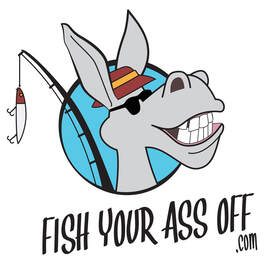
What is the best tide to catch flounder?
The outgoing high tide is the best tide to catch flounder. Flounder rely upon the outgoing tide to bring them shrimp, crabs and fish to their hidden ambush points. They like to hide in strategically located spots that will make it easy for them to catch their prey as the tide brings the food right to them.
The outgoing tide is usually the best tide for most inshore fishing trips. The tide will sweep shrimp, crabs and small fish off of the grass flats, mud flats, oyster bars and any other inshore environment.
Predators like flounders will find a good ambush point around creek mouths, sandy holes in grass flats and deeper channels and wait for the tide to bring them something good to eat.
Flounder are pretty hard to sight fish because they blend in so well to their surroundings. This means that you have to think like a flounder and decide where you would hide to wait for some unsuspecting prey item to swim by your position.
The author of this article is a FISHING CHARTER CAPTAIN. He has been fishing the grass flats, oyster bars and mangroves all over Florida for more than 40 years.
In the article below, we will talk about the best tides, places, baits and lures to catch flounder inshore.
Let's get started.
Watch the video below to learn more about catching flounders.
The outgoing high tide is the best tide to catch flounder. Flounder rely upon the outgoing tide to bring them shrimp, crabs and fish to their hidden ambush points. They like to hide in strategically located spots that will make it easy for them to catch their prey as the tide brings the food right to them.
The outgoing tide is usually the best tide for most inshore fishing trips. The tide will sweep shrimp, crabs and small fish off of the grass flats, mud flats, oyster bars and any other inshore environment.
Predators like flounders will find a good ambush point around creek mouths, sandy holes in grass flats and deeper channels and wait for the tide to bring them something good to eat.
Flounder are pretty hard to sight fish because they blend in so well to their surroundings. This means that you have to think like a flounder and decide where you would hide to wait for some unsuspecting prey item to swim by your position.
The author of this article is a FISHING CHARTER CAPTAIN. He has been fishing the grass flats, oyster bars and mangroves all over Florida for more than 40 years.
In the article below, we will talk about the best tides, places, baits and lures to catch flounder inshore.
Let's get started.
Watch the video below to learn more about catching flounders.
What is the best tide to catch flounder?
The higher parts of the outgoing tide are by far the best for inshore fishermen. The flounder will follow the tide into tidal creeks, mud flats, channels, inlets........ to find prey but they really come into their own when the tide is flushing prey items to them during the outgoing tide.
To catch a flounder you have to remember that they are on the bottom and their strike zone is within a foot or so of the bottom. In other words, if you are fishing in 2 feet of water with a top water lure you are probably out of the flounder's strike zone.
That is why jigs are a flounder angler's favorite lure to catch flatties. You can use just about any jig but if it has some smell to it you will definitely get more bites.
Many flounder pounders like to add a small strip of fish bites or a piece of shrimp to their jigs to maximize their catches. Berkeley Gulps are a great choice because they are super smelly and you can catch multiple flounders on a single gulp shrimp or swimming mullet before they get destroyed.
I created a FREE Online Flounder Fishing Course that covers in great detail all of the ins and outs of catching flounders inshore. You can find that webpage right on this website by clicking right here.
The flounder can go just about anywhere when the tide is high. This means that you have to figure out where they will likely be set up to ambush prey items. The first thing that you are looking for are schools of fish. If you can find bait, then you are likely to find predators that want to eat them.
Creek Mouths
Creek mouths are probably my favorite spots to find flounder with docks being a close second during the outgoing tide. At the mouth of the tidal creeks you will just want to fish a side to fish if it is a large creek and you can't cast to both sides.
If it is small enough to cast to both sides then you will want to set up right in the middle of the creek so that you can cast up current and work you jig back slowly with the outgoing tide.
Docks
When you are targeting flounder around dock pilings during the outgoing tide you will need to cover a lot of docks to find flounder. BUT when you find one you will usually find another one so stay put once you catch one.
The technique is the same. Cast your jig up current and work it around the dock pilings. Give each piling a few casts and move to the next and so on. Start by fishing near the shallowest pilings first because that is where the flounder will most likely be during the higher parts of the outgoing tide.
Grass Flats
Fishing for flounder in the sandy potholes that are in every grass flat that I have ever seen can be productive. You will want to target these sandy potholes during the higher parts of the outgoing tide.
The technique is the same when it comes to catching flounder. You will want to cast your jig, lure or bait up current and bring it back with the current through the sandy pothole.
Make sure to cover the entire pothole a couple of times before moving to another one and repeat the process until you figure out where the flounder are hanging out.
WANT TO CATCH FLOUNDER? BOOK YOUR FISHING CHARTER TODAY!
Watch the video below to learn how to catch flounder with gulp shrimp.
Can you fish for flounder in low tide?
Yes, you can fish for flounder in low tide scenarios. In a way low tide can help you find flounders. Flounders can be anywhere when the tide is high. They can be in 6 inches of water down to 30 feet when they are inshore.
BUT during low tide you know that they will be stuck in some pothole or deeper depression around docks or in creek mouths. This makes it easy to find flounder inshore when the tide is super low.
Most flounder will move out to the deeper ledges when the tide is going out but many will stay in potholes and depressions. That is where you want to target your flounder during low tide.
Conclusion:
You can catch flounder during any part of the tide but the high outgoing tide is by far the best. Lie and wait ambush predators like flounders are specialists.
They rely upon their abilities to hide from their prey to set up ambush points and let the food come to them. They do not chase down their prey so you have to think like a flounder if you want to catch them.
Focus on any inshore areas that will funnel shrimp, crabs and fish to a hungry flounder and you will do just fine. Remember to move your bait slowly on the bottom or within a foot of the bottom and you will get a bite if they are there.
I hope this article helps you catch more flounder or at the very least have a good time trying.
Do you like how to fishing articles like this one? If you answered yes, then get on our email list and we will send you a new article every week. Sign up now and get your first one today.
